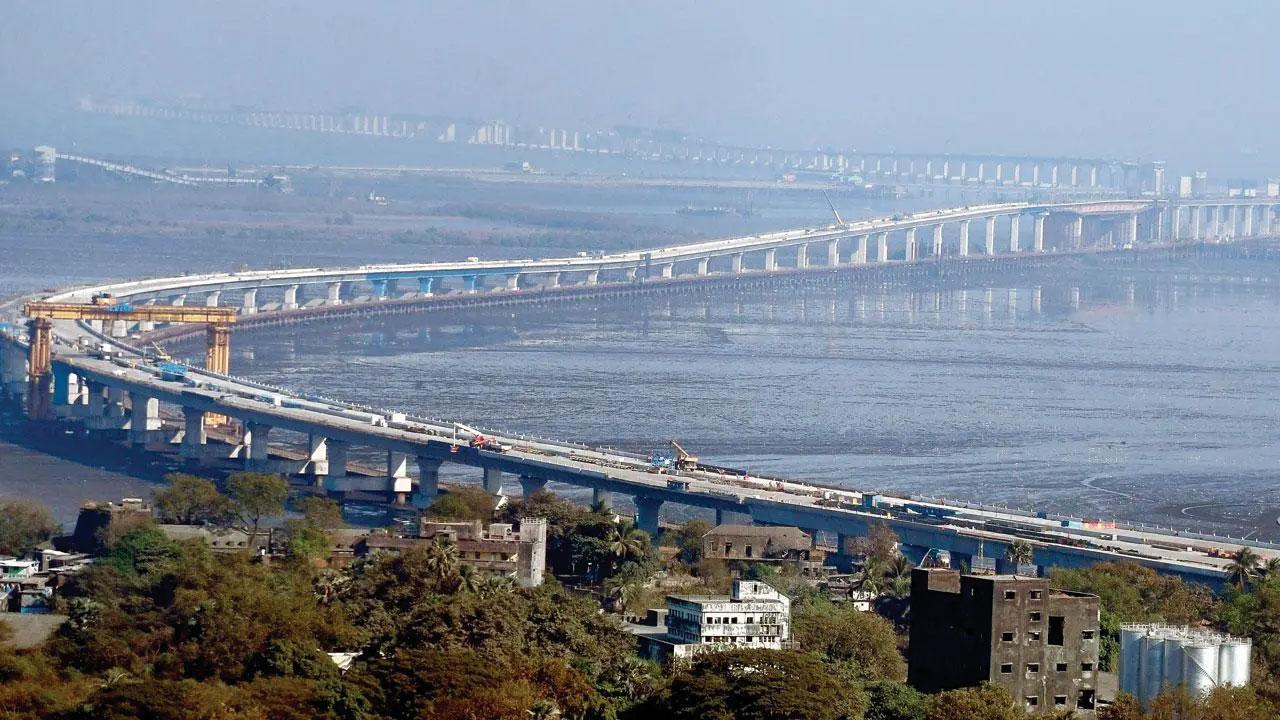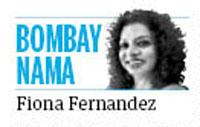Our sutradhaars weigh in on the new Trans-Harbour Link bridge and if it matters to the average Bombaywallah, whose plight is yet to turn for the better

Those who used the bridge on its opening day reported significant reductions in travel times. Pic/Atul Kamble
 Sir PM was late. And his friend wasn’t amused. “Pheroze, I thought I would be the one who would get delayed because I went to see the air show at Marine Drive. But you are making me feel better. May I ask why?” Lady Flora prodded, “And what’s with your windswept look!? Your hair seems to have taken a new style altogether,” she remarked, noticing that he did sport a new hairstyle. Sir PM looked flummoxed at her observational skills. “I was curious to drive down the new Mumbai Trans-Harbour Link sea bridge. I didn’t imagine that there would be thousands like me; besides, it was a nightmare returning to the city,” he admitted, upset at his poor judgement.
Sir PM was late. And his friend wasn’t amused. “Pheroze, I thought I would be the one who would get delayed because I went to see the air show at Marine Drive. But you are making me feel better. May I ask why?” Lady Flora prodded, “And what’s with your windswept look!? Your hair seems to have taken a new style altogether,” she remarked, noticing that he did sport a new hairstyle. Sir PM looked flummoxed at her observational skills. “I was curious to drive down the new Mumbai Trans-Harbour Link sea bridge. I didn’t imagine that there would be thousands like me; besides, it was a nightmare returning to the city,” he admitted, upset at his poor judgement.
ADVERTISEMENT
“I got swayed by all the hype over this engineering marvel; Percy returned after a recce, and was raving about it—he claims to have spotted flamingos—during this flight. Little did I realise that like me, 40,000-odd citizens would be equally curious about driving down this new sea bridge. And while I returned to Sewri in good time, a reality check awaited me. Honking cars, traffic jams and narrow roads made narrower, thanks to all the maintenance work greeted me,” Sir PM continued, clearly scarred by the return.
Lady Flora jumped in, “Pheroze, excuse my ignorance but why build this bridge, and who will benefit from it? Will our Bombaywallahs stand to gain?” Sir PM gave a long pause, sipped on the pudina chai, and replied, “It will cut down time for those who wish to head from the island city to New Bombay, or Navi Mumbai as it’s called now, and vice versa. But for the rest who live and work within the city and its suburbs, it’s business as usual. Those who have holiday homes or second homes, or families in the hinterland, will greatly benefit as well. The toll is also steep, so I wonder why they will choose to use it. Many questions remain…”
Lady Flora was all ears, and came up with her own set of observations, sharp commentator and critic that she was. “Pheroze, my sense is that all this tamasha is going to benefit just a select few, the car-using public. Why haven’t civic administrators, past and present, considered planning a mass, user-friendly transport system that links the main city with its satellite city? The great Charles Correa and his friends had such visions of this second city…I wonder what he would have had to say about this new sea bridge, which I am told, is India’s longest; right, Pheroze?” she asked.
Sir PM quickly responded, “Yes, yes, it is India’s longest bridge, and I was able to cover it in 16 minutes flat. It was a high for us, Jurassic Age citizens. He he. After all, we belong to a different era. Jokes aside, I see your point. I wonder if the common man in the city is going to be affected. Sure, it offers better, faster connectivity between the city and the mainland. But the daily commute of the lakhs who use public transport continues to remain a challenge as it was a decade ago. With increasing numbers of rail and road commuters having to use local trains and buses, and our endless traffic-laden roads, it is not a rosy picture. I hear from my suburban friends that many are happy with the few operational Metro services but the idea of introducing it began, in my humble opinion, way too late. And we continue to pay the price, given the disturbance and pressure on our road network. Even a city we often deride for being slow off the blocks—Calcutta—got their Metro decades ago.”
Lady Flora looked sad. She felt for her city. “Every day as I look from my pedestal, I see the turmoil and exhaustion of the hardworking middle-class majority, as they either rush to work or rush back home. I can understand why the new sea bridge hardly matters. They must be wondering how their lives will get simpler, easier and comfortable.” Sir PM’s eyes widened, and he butted in, “Apologies, but speaking about just the opposite, cousin Persis has been admitted to Parsee General Hospital; she missed a footing while on her morning walk, thanks to a broken pavement, and has injured her ankle very badly. It’s in a cast. This is exactly what I was referring to. Give us the basics —walkable footpaths, well-maintained roads, smarter connectivity [where infrastructure projects are completed within deadlines], and yes, clean air. Bombaywallahs are a non-fussy lot, and they tend to go about their lives [and pay their taxes] so they certainly deserve better than this.”
Both sutradhaars looked at each other. They hoped that their beloved city would not remain a mega, dug-up urban jungle, constantly locked in ‘work-in-progress’ mode; one that they have watched over the decades from the time it carried the tag of ‘Urbs Primus In Indus’—or the premier city of India, to its current state.
mid-day’s Features Editor Fiona Fernandez relishes the city’s sights, sounds, smells and stones...wherever the ink and the inclination takes her. She tweets @bombayana
Send your feedback to mailbag@mid-day.com
 Subscribe today by clicking the link and stay updated with the latest news!" Click here!
Subscribe today by clicking the link and stay updated with the latest news!" Click here!







